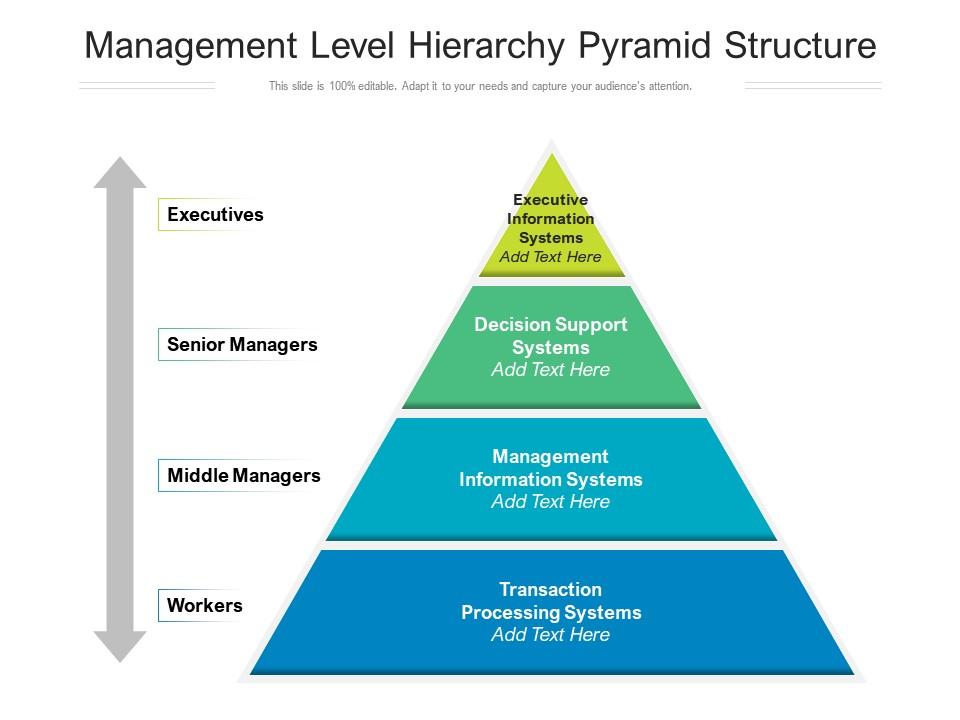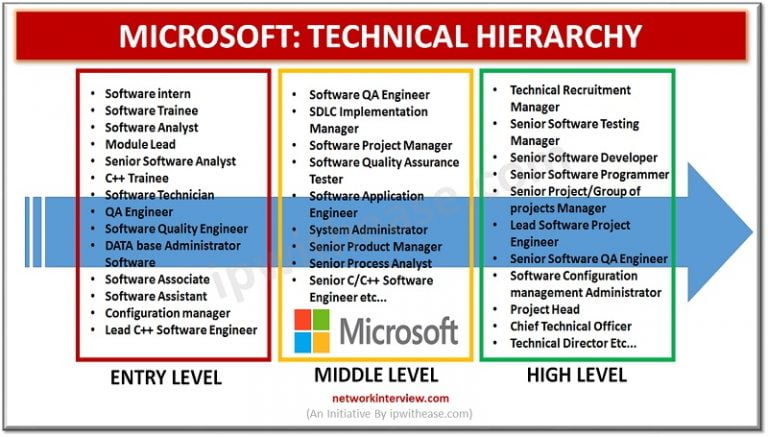Understanding Microsoft’s Organizational Structure: An Overview of Levels in Microsoft
Microsoft is a multinational technology company with a complex organizational structure that includes several levels. At a high level, the company is divided into three main divisions: Product and Service Divisions, Corporate, and Field Divisions. Within these divisions, there are several levels of management and individual contributors who work together to achieve Microsoft’s mission of empowering every person and organization on the planet to achieve more.
The first level of Microsoft’s organizational structure consists of the Board of Directors, which is responsible for overseeing the company’s overall strategy and direction. The Board is composed of a group of elected individuals who represent the interests of Microsoft’s shareholders. Below the Board of Directors is the Executive Leadership Team, which includes the CEO, CFO, and other top-level executives who are responsible for shaping Microsoft’s vision and strategy.
The next level of Microsoft’s organizational structure consists of the Senior Leadership Team, which includes leaders of various business units such as Windows, Office, and Azure. These leaders are responsible for overseeing the development and execution of their respective business unit strategies, and for collaborating with other units to drive innovation and growth. The Senior Leadership Team is supported by a team of managers who lead various teams and projects within each business unit.
At the management level, Microsoft employs a variety of leaders who are responsible for motivating and guiding their teams to achieve their goals. These managers work closely with individual contributors, who make up the largest level of Microsoft’s organizational structure. Individual contributors are employees who work on specific projects or tasks, and who make an impact on the organization through their contributions. These employees can advance their careers within the company by taking on new challenges, developing new skills, and demonstrating their value to the organization.
Microsoft’s unique culture, which values innovation, collaboration, and diversity, is fostered across all levels of the organization. This culture is one of the key factors that has contributed to Microsoft’s success in the tech industry, and it is a major draw for top talent from around the world. By fostering a culture that values creativity, innovation, and collaboration, Microsoft is able to attract and retain the best and brightest employees, who in turn drive the company’s success.
The Executive Level: Leading Microsoft’s Vision and Strategy
The executive level of Microsoft is where the company’s vision and strategy are shaped. The executive team is responsible for setting the overall direction of the company and making decisions that impact the entire organization. The executive team includes the CEO, CFO, and other top-level executives who bring a diverse set of skills and experiences to the table.
The CEO is the highest-ranking executive at Microsoft and is responsible for leading the company’s overall strategy and vision. The current CEO, Satya Nadella, has been credited with transforming Microsoft’s culture and refocusing the company on cloud computing and artificial intelligence. Under Nadella’s leadership, Microsoft has seen significant growth and has become one of the most valuable companies in the world.
The CFO is responsible for managing Microsoft’s financial operations and ensuring that the company is financially stable. The CFO works closely with the CEO and other executives to make strategic decisions that impact the company’s financial health. Microsoft’s current CFO, Amy Hood, has been with the company since 2002 and has played a key role in the company’s financial success.
Other top-level executives at Microsoft include the Chief Marketing Officer, the Chief People Officer, and the Chief Legal Officer. These executives are responsible for leading various aspects of the company’s operations, including marketing, human resources, and legal affairs. Each of these executives plays a critical role in shaping Microsoft’s vision and strategy and ensuring the company’s success.
Under the leadership of the executive team, Microsoft has launched several successful initiatives, including the Surface tablet, the Xbox gaming console, and the Azure cloud computing platform. These initiatives have helped Microsoft to diversify its product offerings and remain competitive in the tech industry. By continuing to innovate and lead the way in technology, Microsoft’s executive team is ensuring the company’s long-term success and growth.
The Senior Leadership Level: Overseeing Microsoft’s Business Units
The senior leadership level of Microsoft is responsible for overseeing the development and execution of the company’s various business unit strategies. This level includes leaders of business units such as Windows, Office, and Azure, among others. Each of these business units has its own unique focus and set of goals, and the senior leaders are responsible for ensuring that each unit is aligned with the company’s overall vision and strategy.
One of the key responsibilities of senior leaders at Microsoft is to drive innovation and growth within their respective business units. This involves working closely with teams of managers and individual contributors to identify new opportunities and develop strategies for capitalizing on them. For example, the senior leader of the Azure business unit may work with their team to develop new cloud computing services that meet the evolving needs of customers.
In addition to driving innovation and growth, senior leaders at Microsoft are also responsible for collaborating with other business units to drive cross-company initiatives. This involves working closely with other leaders and teams to identify areas of overlap and potential synergies, and developing strategies for leveraging these opportunities to drive growth and success. For example, the senior leader of the Office business unit may work closely with the senior leader of the Windows business unit to develop integrated productivity solutions that meet the needs of customers.
One example of a successful initiative led by a senior leader at Microsoft is the development of the Microsoft Teams platform. This platform, which was led by the senior leader of the Office business unit, is a collaboration tool that brings together messaging, video conferencing, and file sharing in a single interface. Since its launch, Microsoft Teams has become one of the company’s fastest-growing products, with over 145 million daily active users as of October 2021. This success is a testament to the power of senior leadership in driving innovation and growth at Microsoft.
The Management Level: Leading Microsoft’s Teams and Projects
The management level of Microsoft is a critical component of the company’s success, as it includes the leaders who oversee various teams and projects. These managers play a crucial role in motivating and guiding their teams to achieve their goals, and their contributions are essential to the overall success of the organization.
Managers at Microsoft are responsible for a wide range of tasks, from setting project goals and deadlines to providing feedback and coaching to team members. They must also ensure that their teams are working effectively and efficiently, and that they are aligned with the company’s overall vision and strategy. This requires strong leadership skills, as well as a deep understanding of the company’s products, services, and customers.
One of the key responsibilities of managers at Microsoft is to foster a culture of innovation and collaboration within their teams. This involves creating an environment where team members feel empowered to share their ideas and take risks, and where diverse perspectives are valued and respected. Managers must also be skilled at facilitating communication and collaboration between teams, and at identifying opportunities for cross-functional collaboration and knowledge sharing.
Microsoft’s management level includes a wide range of roles and responsibilities, from team leads and project managers to engineering managers and product managers. Each of these roles requires a unique set of skills and experiences, and successful managers must be able to adapt to changing circumstances and priorities. For example, a product manager may be responsible for overseeing the development of a new software application, while a team lead may be responsible for managing a group of developers working on a specific feature or component.
One example of a successful manager at Microsoft is Julia Liuson, the Corporate Vice President of the Visual Studio and Developer Tools division. Under Liuson’s leadership, the Visual Studio team has released several successful products, including Visual Studio Code, a popular open-source code editor, and Visual Studio Online, a cloud-based development environment. Liuson’s success is a testament to the power of strong leadership and a focus on innovation and collaboration at the management level.
The Individual Contributor Level: Making an Impact at Microsoft
The individual contributor level at Microsoft is where the rubber meets the road. These are the employees who work on specific projects or tasks, and their contributions are essential to the success of the company. While they may not be in leadership positions, individual contributors play a critical role in driving innovation, delivering high-quality products, and providing excellent customer service.
Individual contributors at Microsoft come from a wide range of backgrounds and have a diverse set of skills and experiences. They may work in engineering, design, marketing, sales, or any number of other fields. What they all have in common is a passion for their work and a commitment to delivering excellence.
One of the keys to success as an individual contributor at Microsoft is the ability to work well in a team. Microsoft is a collaborative company, and employees are expected to work closely with their colleagues to achieve shared goals. This requires strong communication skills, a willingness to listen to others, and a commitment to finding solutions that work for everyone.
Another important factor in the success of individual contributors at Microsoft is the ability to take ownership of their work. This means setting clear goals, developing a plan to achieve those goals, and then executing that plan with excellence. It also means being proactive in identifying and addressing potential issues, and being willing to take calculated risks to drive innovation.
One example of an individual contributor who has made a significant impact at Microsoft is Jensen Harris. Harris joined Microsoft in 2004 as a program manager on the Office team, where he helped to design and develop the ribbon interface that is now used in a wide range of Microsoft products. Harris went on to become a Distinguished Engineer at Microsoft, where he led the development of several innovative products and features.
Harris’s success is a testament to the power of individual contributors at Microsoft. By taking ownership of their work, collaborating closely with their colleagues, and driving innovation, individual contributors can make a real impact at the company and advance their careers in the process.
Microsoft’s Culture: Fostering Innovation and Collaboration Across Levels
Microsoft’s unique culture is one of the key factors that sets the company apart in the tech industry. At Microsoft, innovation and collaboration are valued above all else, and employees are encouraged to think creatively and work together to solve complex problems.
Microsoft’s culture is fostered across all levels of the organization, from the executive level to the individual contributor level. At the executive level, leaders set the tone for the company by articulating a clear vision and strategy, and by creating an environment that supports innovation and collaboration.
At the senior leadership level, business unit leaders oversee the development and execution of their respective strategies, while also collaborating closely with other units to drive innovation and growth. This collaboration is essential to Microsoft’s success, as it allows the company to bring together diverse perspectives and expertise to solve complex problems.
At the management level, leaders motivate and guide their teams to achieve their goals, while also fostering a culture of innovation and collaboration. Managers are expected to create an environment where employees feel empowered to share their ideas and take risks, and where diverse perspectives are valued and respected.
At the individual contributor level, employees are encouraged to take ownership of their work and to think creatively to solve complex problems. Individual contributors are the lifeblood of Microsoft’s innovation engine, and their contributions are essential to the company’s success.
Microsoft’s culture of innovation and collaboration is one of the key reasons why the company has been able to thrive in the tech industry for more than four decades. By fostering a culture that values creativity, collaboration, and diversity, Microsoft has been able to attract and retain some of the brightest minds in the industry, and to stay ahead of the curve in a rapidly changing market.
As Microsoft looks to the future, the company is continuing to invest in its culture of innovation and collaboration. By creating an environment where employees feel empowered to share their ideas and take risks, Microsoft is well-positioned to continue leading the way in the tech industry for years to come.
Career Paths at Microsoft: Advancing Your Career Across Levels
Microsoft is a company that values its employees and invests in their growth and development. With a wide range of career paths available, employees can advance their careers across levels and make a meaningful impact on the organization.
At Microsoft, career development is a collaborative effort between the employee and the company. Employees are encouraged to take ownership of their careers and to seek out opportunities for growth and development. Microsoft, in turn, provides a range of resources and support to help employees achieve their career goals.
One of the key ways that employees can advance their careers at Microsoft is by taking on new challenges and responsibilities. This might involve leading a team, managing a project, or taking on a new role within the company. By taking on new challenges, employees can develop new skills, gain new experiences, and demonstrate their potential for growth and leadership.
Microsoft also offers a range of training and development programs to help employees advance their careers. These programs include technical training, leadership development, and career coaching. By participating in these programs, employees can gain the skills and knowledge they need to succeed in their current roles and to prepare for future opportunities.
One example of a successful career trajectory at Microsoft is that of Julie Larson-Green, who joined the company in 1993 as a program manager. Over the course of her career at Microsoft, Larson-Green held a series of leadership roles, including leading the development of the Office user interface and serving as the chief technology officer for the company’s hardware division. Today, Larson-Green is a corporate vice president at Microsoft, where she leads the company’s applied sciences group.
For those looking to grow their careers at Microsoft, there are a few key tips to keep in mind. First, be open to new opportunities and be willing to take on new challenges. This might mean stepping outside of your comfort zone, but it can also lead to new experiences and growth opportunities.
Second, seek out feedback and be open to constructive criticism. This can help you identify areas for improvement and develop the skills you need to succeed in your current role and prepare for future opportunities.
Finally, take advantage of the resources and support that Microsoft offers. Participate in training and development programs, seek out mentorship and coaching, and connect with other employees who can help you grow and develop in your career.
By following these tips and taking an active role in your career development, you can advance your career at Microsoft and make a meaningful impact on the organization.
Microsoft’s Future: Anticipating Changes Across Levels
The tech industry is constantly evolving, and Microsoft is no exception. With new technologies and trends emerging all the time, it’s important for the company to anticipate changes and adapt accordingly. This means preparing for changes at all levels of the organization, from the executive level to the individual contributor level.
At the executive level, Microsoft’s leaders are focused on staying ahead of the curve when it comes to emerging technologies and trends. This means investing in research and development, partnering with other companies and organizations, and acquiring new technologies and talent to stay competitive.
At the senior leadership level, business unit leaders are responsible for developing and executing strategies that take advantage of new opportunities and mitigate potential risks. This might involve investing in new technologies, developing new products or services, or exploring new markets.
At the management level, leaders are focused on ensuring that their teams have the skills and resources they need to adapt to changing circumstances. This might involve providing training and development opportunities, encouraging innovation and experimentation, and fostering a culture of continuous learning and improvement.
At the individual contributor level, employees are encouraged to stay up-to-date on emerging technologies and trends, and to seek out opportunities to learn and grow. This might involve attending conferences, taking online courses, or participating in hackathons or other innovation events.
Microsoft is also investing in initiatives that are designed to prepare the company for the future of work. This includes exploring new models of work, such as remote work and flexible work arrangements, and investing in technologies that enable collaboration and communication across distances.
For employees looking to grow their careers at Microsoft, it’s important to stay informed about changes in the industry and to be prepared to adapt to new challenges and opportunities. This might involve developing new skills, seeking out new experiences, and building relationships with colleagues and mentors who can help you navigate the changing landscape.
By anticipating changes and preparing for the future, Microsoft is well-positioned to continue leading the way in the tech industry. And for employees, there are countless opportunities to grow and develop in a company that values innovation, collaboration, and diversity.



